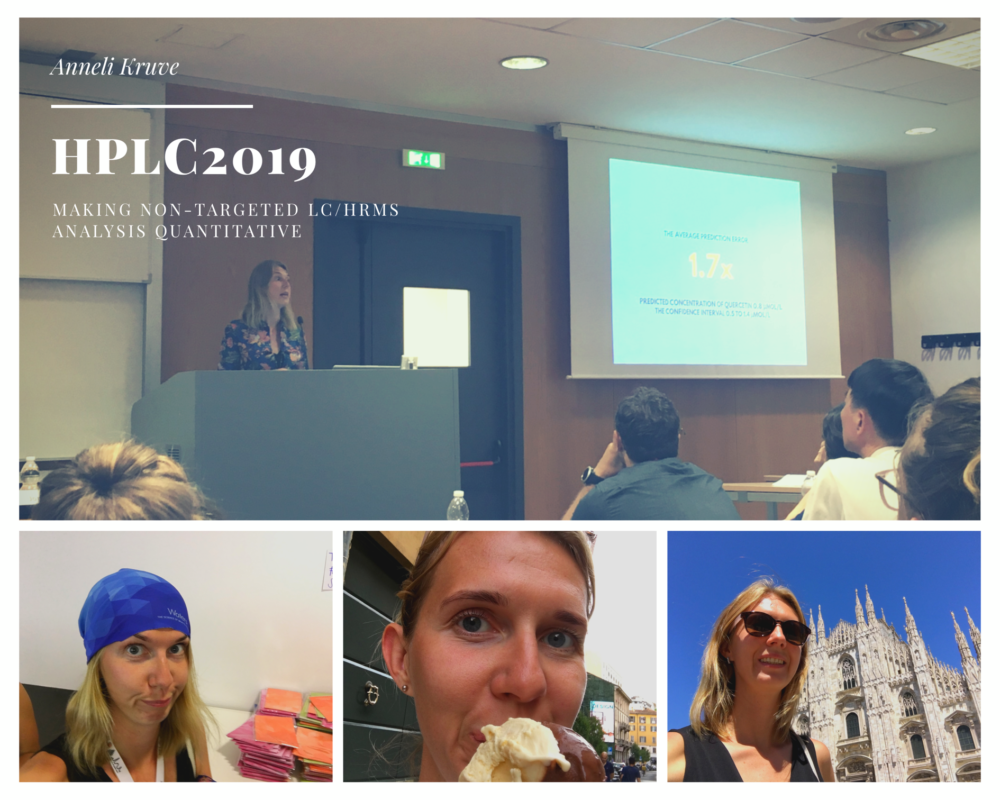Last Thursday the HPLC2019 meeting finished. The conference was this year held in Milano, Italy and incorporated more then 300 talks. I had a chance to give a keynote lecture on the quantification of metabolites from green tea with LC/MS without the need for standard substances.
The main focus of the conference was on the development of liquid phase based separation techniques, including HPLC and SFC. It was my first time attending the HPLC meeting and, therefore, it was interesting to see the trends and developments in the separation science. Some of the facts that were most interesting for me come below.
Firstly, the 2D LC seems to be still of very much interest and under intensive development. It seems that currently the main limitation still is the coupling of orthogonal phases, such as normal and reversed phase LC which is not straightforward. Though, some application examples have been published.
Secondly, I became aware of the LC-GC system that Mariosimone Zoccali has been developing over the past few years. His developments are also already put on the market by Shimadzu. It was also a great pleasure to chair the session on Food Analysis on Monday together with him.
Still, important part of the conference also covered detection methods, mainly mass spectrometry. Basically all application based talks used some form of the mass spectrometric detection. Also, a notable part of talks were using MS also in non-targeted analysis mode. This growing trend of non-targeted analysis is of course very impressive. It seems that the researchers are more and more realizing the possibilities of full scan HRMS analysis. The industry is following the trend and hopefully soon also regulatory bodies will incorporate non-targeted methods in their guidelines and suggestions.
One of the most interesting questions I received was, if I see a possibility for standard substance free quantification on the regulatory level. Let me try to clarify this here as well.
The current situation is that the majority of the analysis done in governmental regulatory laboratories do not find any positive samples, this means forbidden compounds or exceeding concentrations of regulated compounds. Still, labs need to run several different analysis methods, need to re-validate and accreditate these methods and need to have the standard solutions fresh and ready every day. At the same time possibly other unregulated compounds may be present in the samples but are overlooked if not included in the accredited targeted analysis methods. Therefore, it would be much more reasonable to use a generic screening method, such as LC/HRMS based non-targeted screening, to detect not only the regulated but possible unregulated contaminants. Detection of these compounds should be accompanied with a concentration estimate that does not require standard substances. For this purpose the ionization efficiency based quantification that my group is developing is a best available possibility. The accuracy of such predictions needs to be sufficient to make the decisions for further studies. This means, if the concentration is approaching the potentially harmful level. This decision combines information about concentrations present as well as toxicology prediction. Already today, the accuracy of the toxicology predictions is limiting the overall accuracy of this approach but the accuracy is sufficient to decide if the concentrations in the sample are approaching the harmful levels. In this case a more thorough approach with targeted method can be developed or samples sent to central reference laboratories. This approach would be safer, faster and more cost effective not only for private but also for governmental laboratories. I am very happy to see that some countries, such as Denmark and Sweden, are already moving in this direction.
I also summarized the current statues of standard substance free quantification for the last issue of LCGC.
Get in touch if you are interested in standard substance free quantification.


